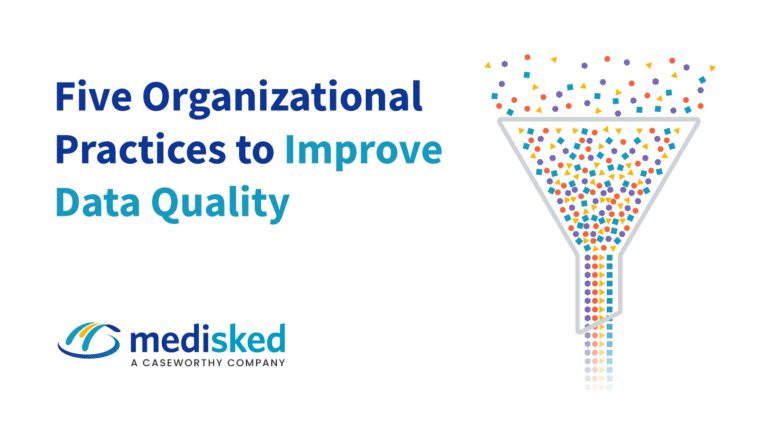As states, payers, and oversight continue to find new and innovative ways to improve quality, cost, and efficiency of home and community based services (HCBS), many are looking to Value-Based Payments as a reimbursement model that drives these goals. Value-Based Payments (VBP) is a reimbursement model that shifts away from compensating providers based on volume (fee-for-service), and towards a model which rewards providers based on their efficiency and quality of care. The idea behind this shift is to incentivize providers to create more value in the services that they provide, instead of incentivizing sheer volume of services.

VBP is most commonly implemented through one of four payment arrangements. States can implement a combination of these arrangements to create the VBP system that works best for that state. The common arrangements include:
- Shared Savings
- Pay for Performance (P4P)
- Clinical Episode Payments
- Capitation/Global Risk
This post is part one of a four-part series which will provide background information on each of these VBP arrangements, and considerations for both states and payers when designing their VBP systems for the HCBS community.
Shared Savings
States that want to utilize integrated care models authorized under the Affordable Care Act (ACA) have the opportunity to participate in a shared savings program with the Centers for Medicare and Medicaid Services (CMS).
The shared savings model allows providers “training-wheels” to move away from fee-for-service and towards a risk and capitated based payment model. It is also commonly known as pay-for-performance. Groups of providers can receive a baseline payment relating to a specific spending target (referred to as total cost of care (TCoC)) for a Medicaid population, and providers understand that actual spending can be higher or lower than this baseline. The essential idea is that when actual spending is below the baseline, providers are rewarded as they can receive additional payments based on the savings created by coming in under the baseline (additional payments can be based off a set of performance quality measures). This is designed to reward quality of care over quantity of service.
The shared savings model can be highly customized from state to state, but can generally be characterized into two forms: “upside-only” risk (“one-sided”), and “shared-risk” (“two-sided”). Shared savings arrangements generally start with upside-only, which allow providers to be rewarded for creating cost savings while meeting their quality measures, but does not penalize them for going over the spending baseline. Shared-risk is the more advanced form, which will actually penalize providers (through uncompensated services), for going over the spending baseline. The percentage of savings awarded to a provider group or provider is based on the amount of financial risk they are willing to assume.
To ensure required services are being provided to the HCBS population, a provider’s performance on quality measures also helps determines how much of a bonus it is eligible for. A key difference between pay-for-performance models (which target individual providers) and the shared savings model (which targets groups of similar-type providers) is that the performance measures for shared savings will reflect the quality of care a provider group provides for an entire population, as opposed to individual outcomes.
Structuring State Shared Savings Programs
When participating states submit the VBP plan to CMS for approval, they must outline the entire structure of how their Medicaid Shared Savings model will operate. This includes detailed descriptions of different components and methodologies included in the model, including:
- Eligibility of participating providers
- In order to participate in a shared savings type VBP model, providers will need to be able to track and report on the necessary data to aid the state in measuring and comparing provider performance.
- Populations included within the model
- Deciding on the exact conditions and/or populations to be considered in the shared savings arrangement has a large impact on how other components are handled, including how to measure the initial total-cost-of-care benchmark.
- Actuarial analysis
- States must conduct an analysis to determine the risk mitigation strategies and excluded costs from the populations cost measures, in order to arrive at the most accurate total-cost-of-care benchmark possible for the state to achieve its shared savings arrangement goals.
- Attribution methodology
- This is the method by which states can reasonably attribute cost savings and care outcomes to the effects of provider groups and individual providers.
- Comparison populations
- This provides a reasonable basis to see whether generated cost savings in the performance period are a result of the provider’s efforts or based on other extraneous factors.
- Baseline data
- Establishing the total-cost-of-care benchmark using historical Medicaid expenditure data for the population being covered gives a starting place for measuring future performance.
- Data trending
- States need to use trend factors to project cost growth that would have occurred in the performance period were it not for savings generated by the shared savings arrangement.
- Performance period
- The purpose of the performance period is to provide a timeframe in which to measure the impact of the provider or provider group against the total-cost-of-care benchmark.
- Rebasing the baseline calculation
- This total-cost-of-care benchmark will need to continually be rebased as the shared savings program progresses, to account for other reform efforts and overall Medicaid program changes not in effect during the original benchmark period.
- Measuring success: components of an evaluation
- Evaluating program success is critical to determine the effectiveness of the shared savings arrangement, as well as how any particular components or aspects of the program are affecting quality, cost, or feasibility
No matter the VBP arrangement or model chosen, states will need to design their VBP systems with many of the considerations above in mind. VBP represents an important shift in the industry, not just in how services are reimbursed but also how data, costs, and measures are tracked and reported on, including at the provider level. As states move closer and closer to implementing VBP in the HCBS space, it is important for providers to be educated regarding the possible VBP arrangements, and to have the necessary technology infrastructure in place to maximize their participation in that VBP arrangement.
How MediSked Can Help
MediSked is the trusted partner to human services organizations across the country, delivering integrated technology solutions and expertise to improve outcomes and cost efficacy in long term service and supports delivery for state and county oversight, payers, care coordination entities and provider agencies. Working collaboratively with its clients and partners, MediSked has developed a full-featured software ecosystem, which includes the statewide data aggregation tools necessary to support the data tracking and reporting that is required of state shared savings programs, and innovations to drive operational efficiencies and improve population outcomes.
Click here to request a demo and learn more about how MediSked’s solutions can help your organization transition to VBP.







